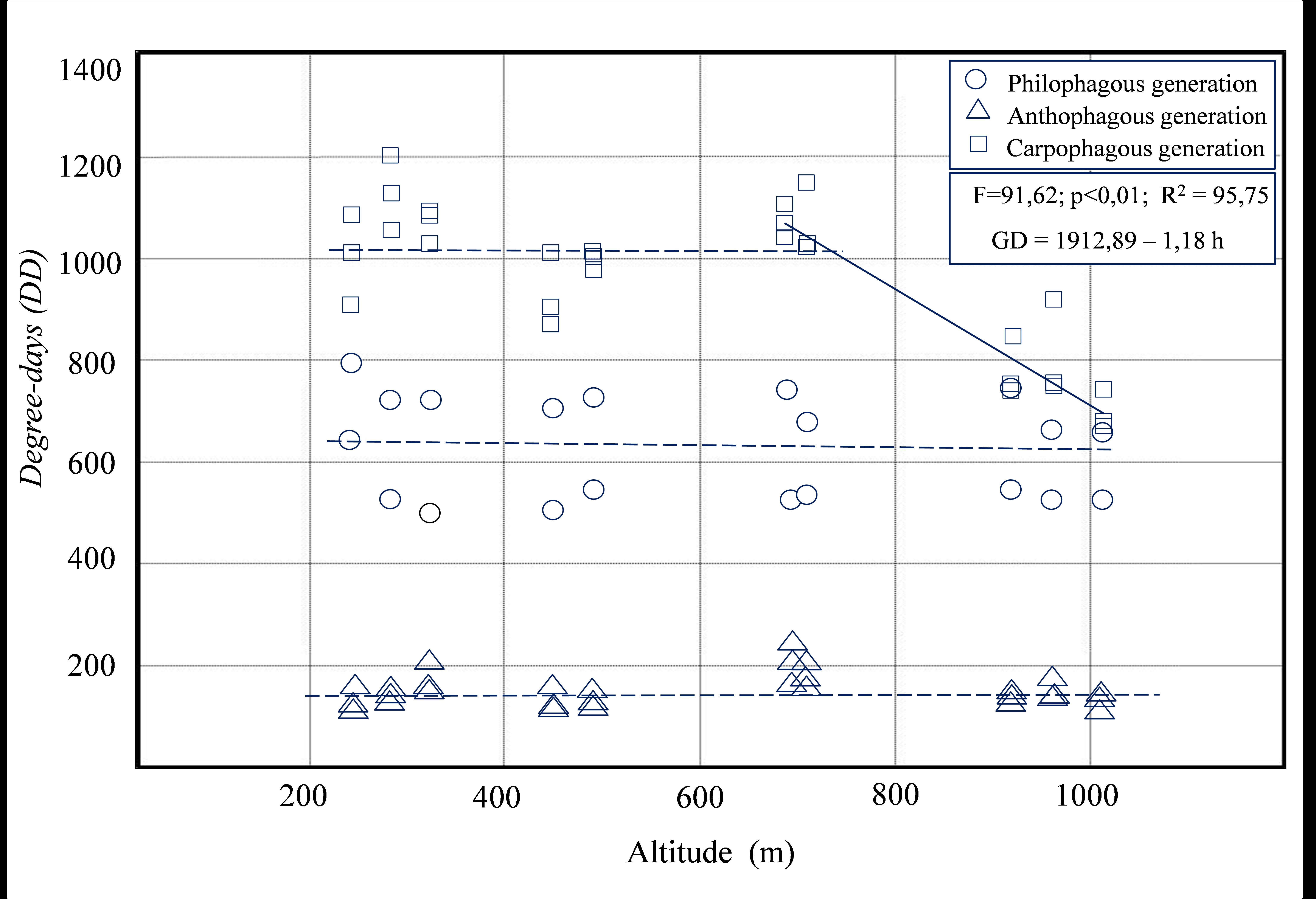Abstract
Olive moth, Prays oleae, is one of the most important phytophagous of olive cultivation in the Mediterranean basin. Its control is based on the application of chemical insecticides, sometimes combined with the release of natural enemies. The need for application is established according to population thresholds. How-ever, the wide range of environmental conditions requires the adoption of comple-mentary elements that allow the adequate time of applications to the phenological stages responsible for the damage. During the years 2013, 2014 and 2015, weekly observations of the insect phenology have been performed in 10 plots of olive trees at different altitudes (253 m to 1017 m) in the province of Jaén (southern Spain), recording daily temperature variations at 4-hour intervals. This has allowed deter-mining the thermal integrals for the three insect generations and to specify the in-fluence of the altitude on its development periods, more especially in those corre-sponding to the philophagous and carpophagous generations. This knowledge has allowed the development of a model-chronogram for the adjustment of treatment dates based on crop altitude.
Index terms
Degree-days; thermal integral; accumulated heat units; altitude; Prays oleae

 Thumbnail
Thumbnail
 Thumbnail
Thumbnail
 Thumbnail
Thumbnail


